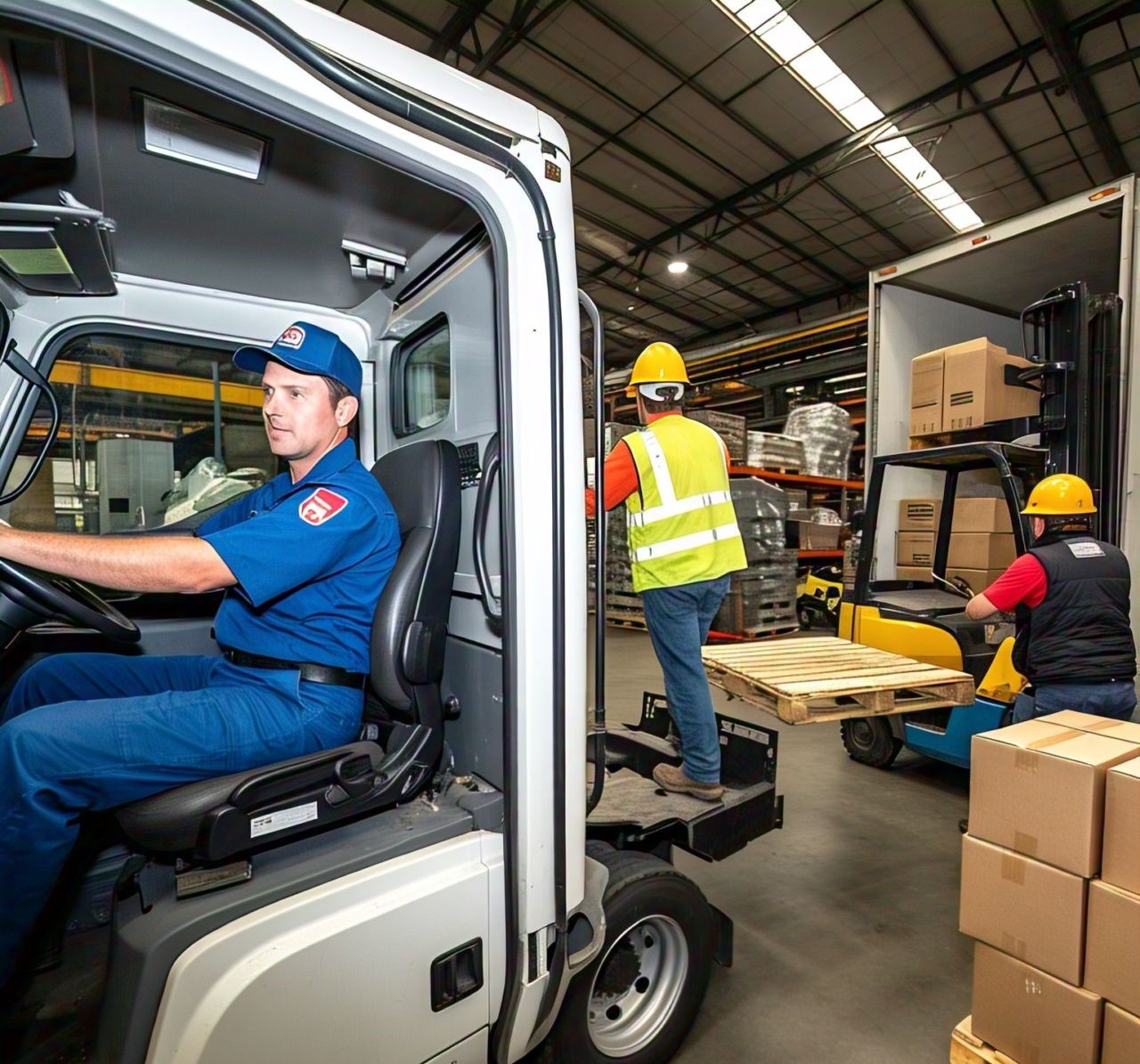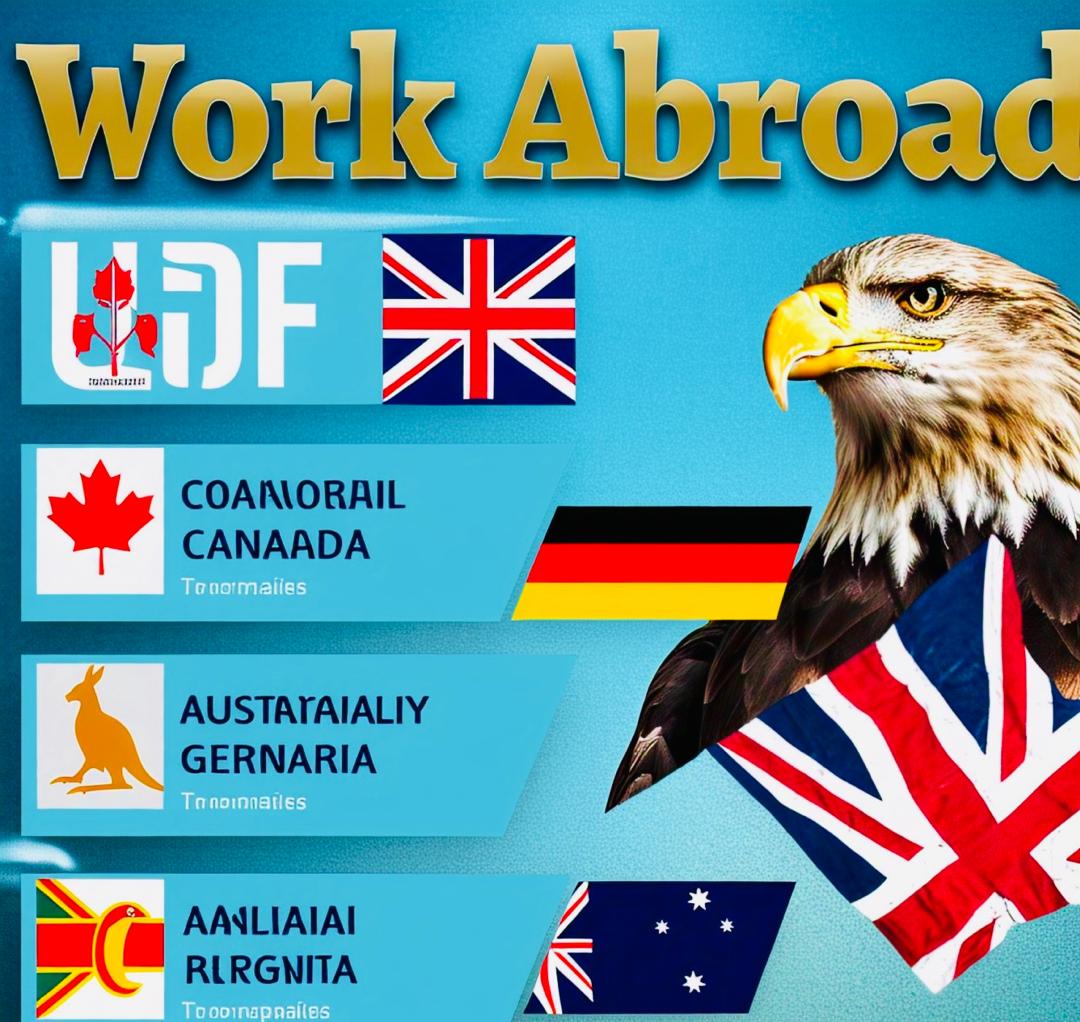Imagine this, the open road, cool air blasting through your window, a nice paycheck waiting for you at the end of your ride.
For many immigrants and Canadians too, driving jobs in 2025 has become much more than just driving and they’re keys to finances, career advancement, and even permanent residence.
Whether you’re already in Canada or considering moving in the nearest future, the jobs of driving have become some of the most stable, flexible and affordable jobs in the country.
In this article, we’re going deep into the options available for working as a driver in 2025 from long-haul trucking and deliveries to bus driving and private transportation, as well as sharing real stories, income information, and actionable steps on how to get into the industry.
To start with, let’s highlights some details on why driving jobs are in demand in 2025
It is important for you to know that the need for professional drivers in Canada is more than just an opportunity. It’s a basic requirement. Here’s the scoop:
• The enormous size of Canada implies it has a dense population that requires constant movement.
• The workforce is aging: The majority of current truck drivers and commercial vehicle operators are retiring.
• The boom In online shopping has contributed e-commerce growth along with a significant rise in demand for delivery drivers.
• Public transport growth, alongside the urban expansion, is responsible for the increased need for drivers in various regions.
So, if you possess a clean record, valid driving license, and the requisite determination to work, then Canada is ready to welcome you.
So let’s talk about the different driving occupation available in Canada.
1. Long-Haul Truck Drivers: They are known as the kings of the road. Of course because of their sizes.
• Average Salary in 2025: $70,000 – $110,000/year
• Top Provinces Hiring: British Columbia, Saskatchewan, Ontario, Alberta
• Work Visa Options: Rural and Northern Immigration Pilot (RNIP), Provincial Nominee Program (PNP), LabourMarket Impact Assessment (LMIA-based)
Newcomers to Canada find long-haul trucking to be one of the top-paying driving jobs since these drivers move in freight from one province to the other and even internationally.
Let us share Daniel’s story, a Nigerian immigrant who is now working in Canada after getting his truck-driving job through the Rural and Northern Immigration Pilot (RNIP). After two years, he was able to buy a house in Manitoba and now wishes to bring his family over through family sponsorship.
You will be wondering why this particular job pays well. Here are why:
• Driving long-distance comes with high wages, especially overnight routes.
• Drivers operating on the Canada-U.S. borders earn even higher wages.
• Extra pay for safe driving and punctual deliveries.
To be able to work in this area, you need to meet up with some requirements. Which are:
• Class 1 (or Class A) driver’s license.
• No recent driving violations.
• The ability to pass the company’s drug test.
• Moderate experience is preferred, but many firms provide paid training.
So now let’s hit the nail on the head. How to get in:
• Apply through logistics companies such as Challenger, Bison Transport, or Tandet.
• Search for LMIA (Labour Market Impact Assessment) job offers for work permit sponsorship.
• Consider taking a position at a smaller, local firm to develop your resume.
2. Local Delivery Drivers: This is another type, also known as the E-Commerce Boom Crew.
• Average Salary: $50,000 – $80,000 a year
• Top employers: Amazon, FedEx, UPS, Purolator, and Walmart.
• Best cities: Toronto, Vancouver, Calgary, and Montreal.
Online purchasing has altered the game. With warehouses cropping up across Canada, the demand for dependable delivery drivers is at an all-time high.
Esther’s Story: After migrating from Ghana to Brampton, she began working for Amazon Flex. She earned $27 per hour driving her own car and then joined Purolator full-time, with perks and a retirement plan.
There are benefits to be enjoyed. These Benefits are:
• Flexible hours
• Opportunities to shift into full-time roles
• Some roles require little or no hard lifting.
Requirements:
• G-class (or comparable) driver’s license.
• Knowledge of local areas
• Effective communication and time management
How to Start:
• Apply directly to the courier firms.
• Sign up for Amazon Flex, Uber Eats, or SkipTheDishesto begin earning while looking for full-time work.
3. Bus Drivers: Also known as the heart of urban transportation.
• The average annual salary ranges from $60,000 to $90,000.
• Top employers include city transit authorities (e.g., TTC, TransLink, OC Transpo) and private school bus businesses.
• Best cities: Toronto, Ottawa, Vancouver, and Calgary.
Bus drivers are vital to Canada’s public transit system. Every day, they transport millions of Canadians to and from work, school, and other locations.
Ibrahim’s Journey: Ibrahim, a former mechanic in Nigeria, moved to Ontario and started working for First Student Canada as a bus driver. He now makes $75,000 a year, receives benefits, and only drives during the school year.
Why This Job Rocks:
• Unionized employment equal higher income, job security, and benefits.
• Split shifts offer you midday flexibility.
• Employers typically provide training.
License Requirements:
• Class 2 or Class B license.
• Clean driving and criminal record
• Customer Service Attitude
How to Get in:
• Several school bus companies provide paid training programs.
• Municipal transit agencies often hold recruitment drives.
4. Ride-Hailing and Private Drivers: These are the Flexible Income Streams.
• Average income: $40,000 – $70,000 per year (full-time)
• Top platforms include Uber, Lyft, InDrive, and local limousine providers.
• Locations: Major cities— Toronto, Montreal, Calgary, and Vancouver
While not necessarily the most lucrative per hour, ride-hailing provides unparalleled freedom. Many immigrants utilize this as a stepping stone to further their education or certifications.
Lola’s Hustle: After moving to Montreal as a student, Lola worked part-time as an Uber driver. She used the money to pay off her tuition and eventually became a full-time luxury driver for business clients.
Perks of working in this sector:
• Schedule your own hours.
• Surge pricing, boosts income.
• Various platforms equal various income streams.
Basic Requirements:
• G-class driver’s license.
• Clean driving record.
• Own or rent an eligible automobile.
Tips to Maximize Income:
• Work during peak hours (morning/evening rush and weekends).
• Sign up for bonuses and referral programs.
• Get your vehicle insured for business driving.
5. Heavy Equipment and Construction Drivers. Yes they are available too.
• Average annual salary ranges from $70,000 to $100,000.
• Job titles include dump truck driver, excavator operator, and crane truck operator.
• Hiring Industries: Construction, Mining, Oil and Gas .
• Best provinces: Alberta, Saskatchewan, and Newfoundland & Labrador.
If you enjoy working with large machinery, this is a lucrative career. These positions are particularly lucrative in Canada’s construction and mining-heavy regions.
For example, Farouk from Kenya works on a construction site in Alberta, operating heavy-duty trucks. He earns nearly $90,000 per year, plus overtime and housing allowances.
Requirements:
• DZ(Straight Truck) or AZ(Tractor Trailer) license (based on the vehicle)
• Heavy machinery certification (given by the business or trade school).
• Physical Fitness and Safety Training
PS:
• Look for chances in resource-rich provinces and large-scale projects.
• Join unions or associations to gain greater job opportunities and protections.
6. Specialized Transportation Drivers
• Average Salary: $80,000 – $120,000 a year
• Top companies include Trimac, Tankmart, and Manitoulin Transport.
• Job opportunities include fuel tanker drivers, livestock haulers, refrigeration truck drivers, and hazmat specialists.
These positions require specialized knowledge yet pay much more owing to risk and regulation.
Prosper’s Path: After becoming qualified in hazardous transport, he started working for a petroleum company in Saskatchewan. He now earns six figures and is on the fast track to permanent residency.
Must-Haves for this job:
• Additional certificates (such as Transportation of Dangerous Goods (TDG), Workplace Hazardous Materials Information System (WHMIS), and Hazmat training)
• Physical and mental stamina.
• Complying with provincial transportation laws.
Driving as a Gateway to Permanent Residency.
Canada is one of the few countries that allows blue-collar workers, such as drivers, to apply for permanent residency through numerous streams:
Best Immigration Programs for Drivers:
• The Provincial Nominee Program (PNP)
• Rural and Northern Immigration Pilot (RNIP).
• Atlantic Immigration Program
• Agri-Food Pilot (For Farm Truck Drivers)
• Express Entry (provided you gain Canadian job experience).
Some firms provide LMIA-sponsored jobs, making it easier to obtain a work visa and begin your route to permanent residency.
How to Begin Your Driving Career in Canada.
So the next guidelines are on how you can begin a driving career in Canada.
1. Check the license requirements.
You may need to convert to a foreign license. Some provinces recognize Nigerian, Ghanaian, or Kenyan licenses temporarily but demand a written and driving test for permanent recognition.
2. Obtain a Canadian Driver’s Abstract.
This is like your “driving report card.” Provinces utilize it to examine your driving record.
3. Participate in a Driver Training Program. Enroll in a licensed school that provides truck or bus driving instruction. It promotes employment and immigration.
4. Start applying.
Search for job boards such as:
• Indeed Canada
• TruckingJobs.ca
• JobBank.gc.ca
• Workopolis Company career pages
The above sites are where you can get driving jobs.
In 2025, driving jobs in Canada is more than just a way to make a living; they are a powerful path to a stable, rewarding future. From Alberta’s huge highways to Toronto’s crowded streets, Canadians and immigrants alike are discovering that professions behind the wheel can be both financially rewarding and personally inspiring. The fact that this professional path is so accessible adds to its appeal. Unlike many occupations that need extensive degrees or years of Canadian experience, the driving sector provides opportunities where talents, discipline, and determination are more important than academic qualifications. Whether you’re freshly arrived in Canada or want to relocate soon, driving jobs give a real shot at success, often with the extra benefit of employer support for immigration and permanent residency.
Consider long-haul trucking, which remains one of the most profitable and in-demand driving jobs in the country. With salaries exceeding $100,000 in some places and firms actively seeking foreign talent through LMIA or Provincial Nominee Programs, it is evident that Canada is not just employing drivers, but also investing in them.
For individuals concerned about entry hurdles, Canada has established a framework that encourages skill development. Even if you’re beginning from scratch, there are plenty of training programs, driver schools, and government tools available to assist you get started in the field. Furthermore, certifications such as TDG and WHMIS not only increase your employability but also provide an advantage in specialized, higher-paying professions.
Local deliveries, gasoline tanker driving, school bus work, and ride-hailing gigs all have their own attraction, catering to different lives and aspirations. Some allow for freedom and independence, while others provide structure, perks, and long-term employment stability. The goal is to match your specific requirements and qualifications to the appropriate type of driving opportunity.
Let us not forget the immigration advantage. Many drivers use their jobs to advance to permanent residency and citizenship, whether through the Rural and Northern Immigration Pilot (RNIP), Provincial Nominee Program (PNP), or LMIA-based employer sponsorship. This is a big advantage for newcomers trying to establish roots in Canada.
At its foundation, Canada’s transportation business is about more than just carrying products and people; it is also about advancement, connectivity, and opportunity. The demand for qualified, responsible drivers is unlikely to slow down anytime soon, and those who act now stand to benefit the most.
So, if you’re seeking for a well-paying, in-demand work with flexibility, professional advancement opportunities, and perhaps a path to Canadian permanent residence, the road ahead is wide open. All you have to do is take the first step: be trained, licensed, and get started.
The driver’s seat is yours. Canada is waiting.






